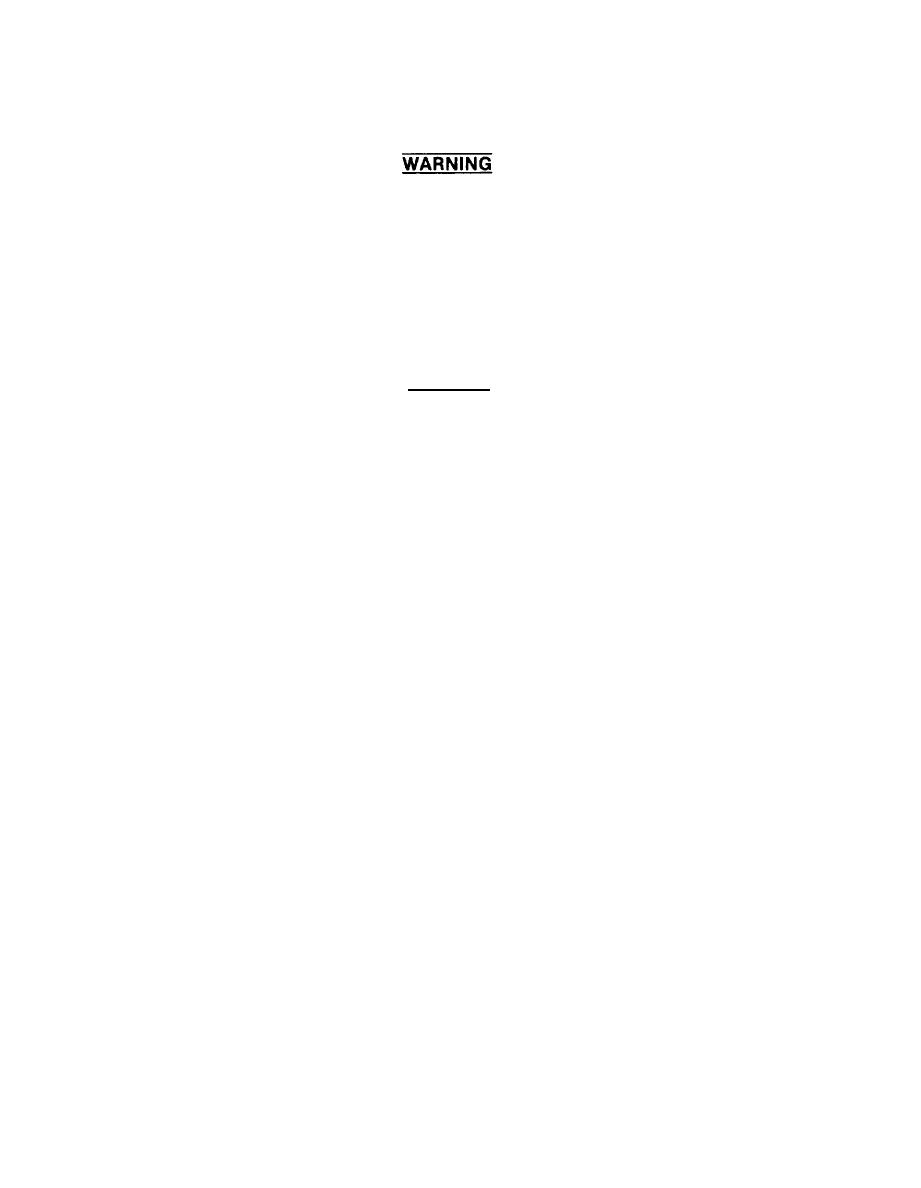
TM 9-2330-285-14&P/TO 36A11-21-10-1
CLEANING INSTRUCTIONS - CONTINUED
Particles blown by compressed air are hazardous. Do not exceed 30 psi (207 kPa) air
pressure. Make certain the air stream is directed away from user and other personnel in the
area. To prevent injury, user must wear safety eye goggles or face shield when using com-
pressed air.
c. Blow out all tapped (threaded) holes with compressed air to remove dirt and cleaning
fluids.
Electrical Cables, Flexible Hose, And Oil Seals
CAUTION
Washing electrical cables and flexible hoses with drycleaning solvents or mineral
spirits will cause serious damage or destroy the material.
Wash electrical cables and flexible hose with water and mild soap solution, and wipe dry. Oil
seals are generally damaged during removal, so cleaning will not be necessary since new seals
will be used in assembly.
Refer to TM 9-214 for instructions and procedures covering care and maintenance of bearings.
INSPECTION INSTRUCTIONS
All components and parts must be carefully checked to determine:
a. If they are serviceable for reuse.
b. If they can be repaired,
If they must be scrapped.
c.
Drilled And Tapped (Threaded) Holes
a. Inspect for wear, distortion, cracks, or any other damage in or around holes.
b. Inspect threaded areas for wear, distortion (stretched), or evidence of cross-threading.
c. Mark all damaged areas for repair or replacement.
Metal Lines, Flexible Lines (Hoses), And Metal Fittings
Inspect metal lines for sharp kinks, cracks, bad bends, or if badly dented.
a.
b. Inspect flexible lines for fraying, evidence of leakage, or loose metal fittings or
connectors.
4-23

